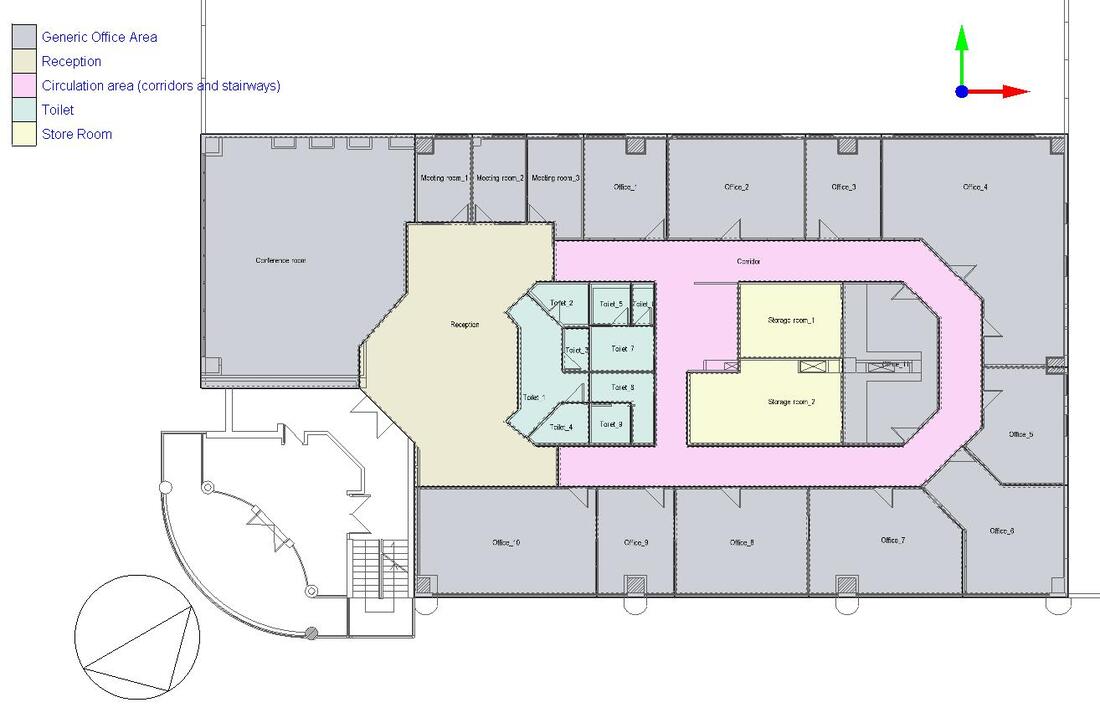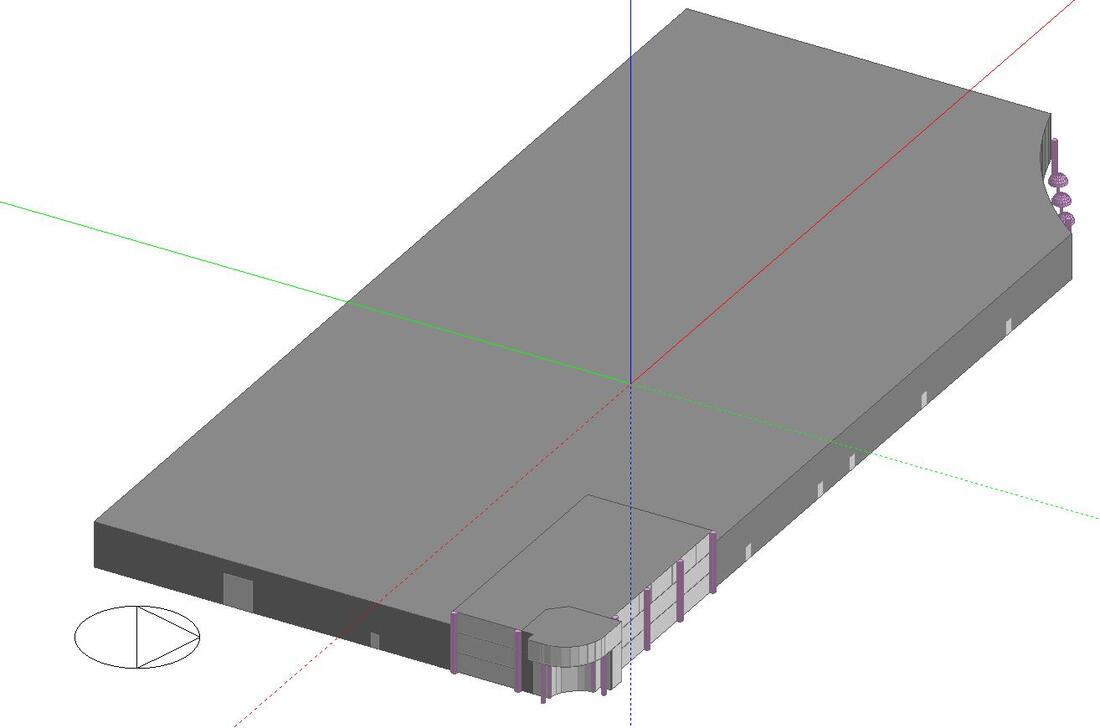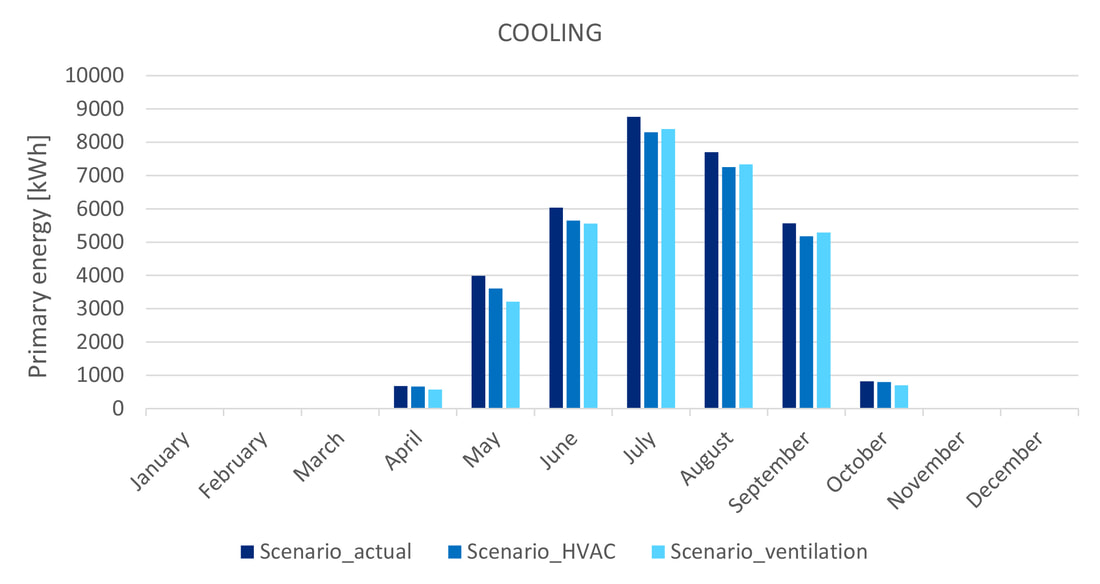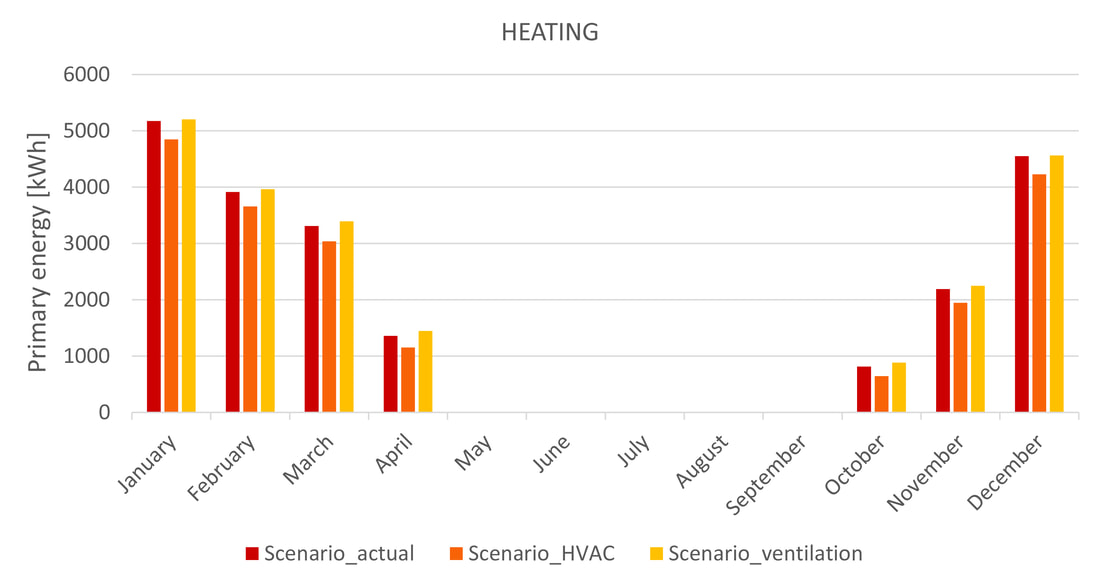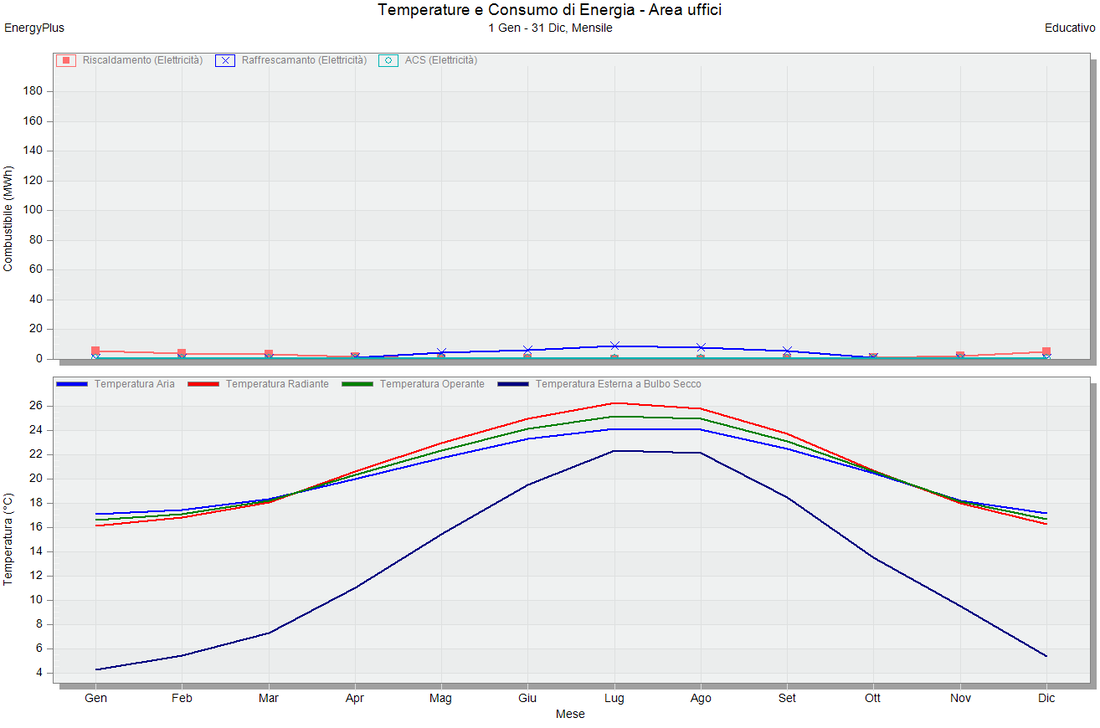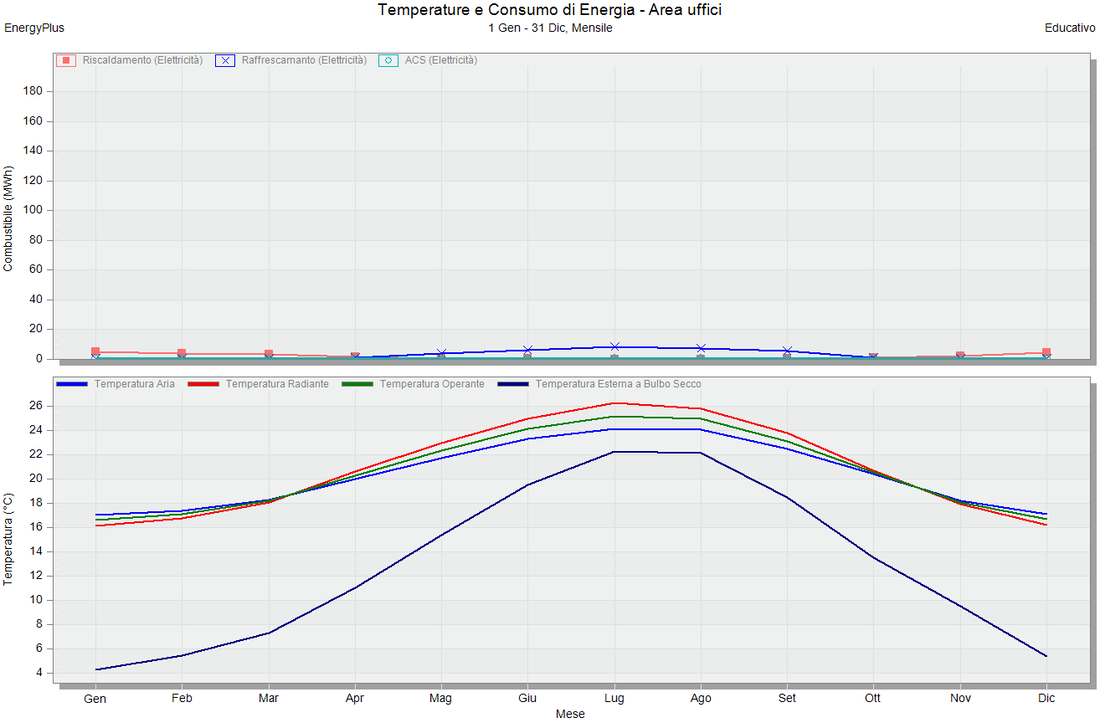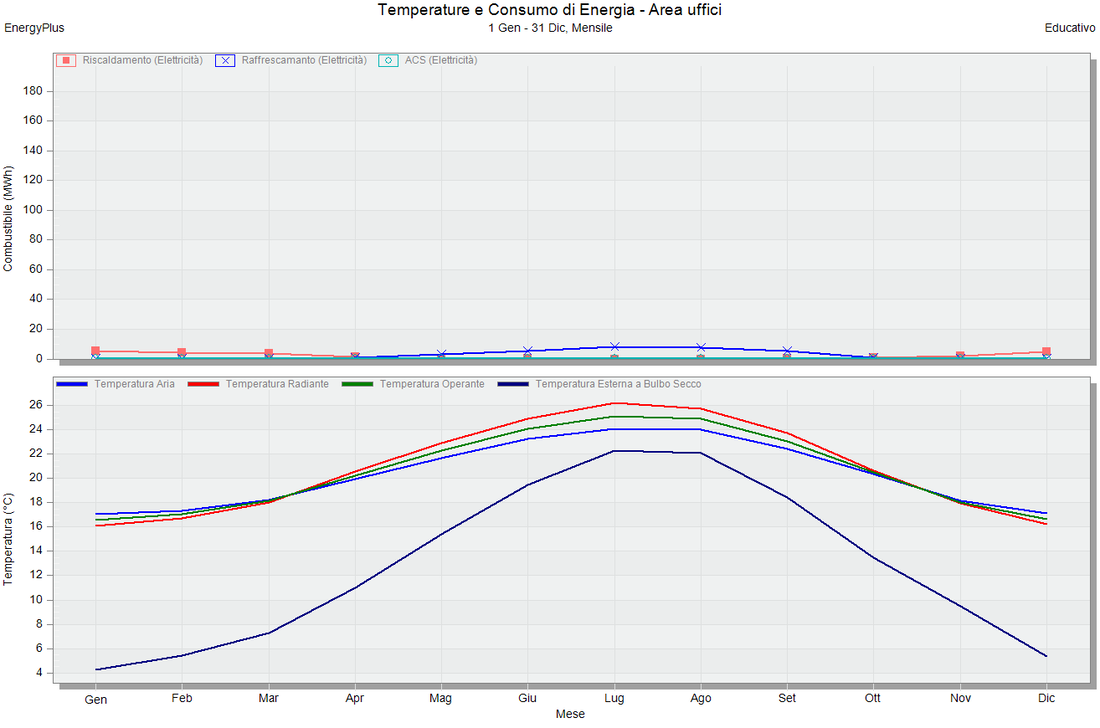DYNAMIC BUILDING ENERGY SIMULATION
Following the survey campaign in the case study building and in parallel with the previous activities, the thermal-energy dynamic simulation model of the building was developed. The purpose of this analysis is the complementary assessment on the role of occupant behavior for building energy efficiency and the evaluation of the achievable energy saving and comfort conditions in the case study building thanks to the triggering campaign. The dynamic simulation model of the case study building was developed within EnergyPlus simulation environment with DesignBuilder graphical interface, according to the technical information provided by the partner company of the project. Regarding the occupancy and occupant behavior schedules, the presence during the week and during the day was modeled according to the answers of the questionnaire.

